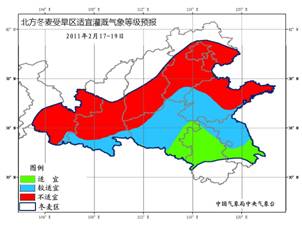On February 15, Henan Yellow River Bureau issued, 29 rivers in Henan, Huangkou, Liuyuan, Dagong and other 29 water diversion gates were opened to release water, and the diversion flow reached 204.07 cubic meters per second. The Yellow River Yellow River Irrigation District ushered in 17.63 million cubic meters of Yellow River water, which is equivalent to the storage of a medium-sized reservoir in the Yellow River every day to quench the thirst in the dry wheat fields along the Yellow River irrigation area in Henan. China News Agency reporter Wang Zhongjue China Xingnong.com reported on February 17 that according to the agricultural situation of the Ministry of Agriculture, as of 17:00 on February 15, the drought-affected area of ​​winter wheat in Hebei, Henan, Shandong, Shanxi, Jiangsu, Anhui, Shaanxi and Gansu provinces reached 100.59 million mu. It accounts for 36.8% of the sown area, of which 18.22 million mu is seriously affected by drought, accounting for 6.7% of the planted area; the severely affected area is reduced by 6.98 million mu compared with February 7. In view of the severe drought in the Yellow River Basin and several provinces in the water supply area, the Yellow River Flood Prevention General began to raise the early warning level of the Yellow River Basin from the yellow warning to the orange warning on the 16th to fully support the local drought. It is understood that after the Yellow River Defense launched the emergency drought-resistance level III response, although the Yellow River has experienced two small rain and snow processes along the Yellow River, the drought is still developing due to the precipitation of only 3 to 10 mm. In view of the current drought development along the Yellow River and the demand for water diversion from the Yellow River, the Yellow River Defense will further raise the early warning level at 10:00 on February 16, release the drought orange warning in the Yellow River Basin, and initiate the emergency drought response level II response. In the next 10 days, there is no obvious precipitation in most of the northern winter wheat-affected areas. It is expected that on the 16th to the 25th, the winter wheat areas in the northwestern part of the northwest, western North China, and western Huanghuai will have weak precipitation processes. The cumulative precipitation is generally 1 to 5 mm, of which 6 to 8 mm is located in southeastern Gansu and southwestern Shaanxi. The main precipitation process occurred around 17-18 and 25 days. Most of the winter wheat has been less than 1 mm in precipitation since the 13th, and there is no obvious precipitation in the next 10 days. The drought cannot be effectively alleviated. In the second half of February, most of the northern winter wheat will gradually return from south to north, and the water demand will increase. The impact of drought on winter wheat will gradually increase. Winter wheat in drought-affected areas should pay close attention to weather changes and do scientific irrigation. From today (17th) to 23rd, the northern winter wheat area is suitable for irrigation. On the 17th and 19th, the average daily temperature in the southwestern Shaanxi, central and eastern Henan, southern Shandong, Jiangsu and Anhui regions will gradually rise to above 3 °C, suitable or suitable for irrigation, and the remaining winter wheat areas are still not suitable for irrigation. On the 20th to 23rd, the average daily temperature in the southwestern Shaanxi, most of Henan, southeastern Hebei, western and southern Shandong, Jiangsu and Anhui winter wheat areas will reach above 3 °C, suitable for irrigation. Forecast map of suitable irrigation meteorological grades in northern winter wheat arid area from February 17-19, 2011 Suggestions for irrigated agricultural production in the arid regions of the North. Winter wheat in arid areas that are suitable or suitable for irrigation should be sprinkled or finely watered in the afternoon after a warm and sunny day. Avoid flooding with large water to prevent the surface from freezing and freezing the wheat; after irrigation, take measures such as rowing and straw covering. To protect the temperature and increase the temperature; for the small or late weak wheat field, the amount of organic fertilizer can be applied at the same time as watering, and the roots are promoted. Modern Faucets Bathroom,Square Bathroom Basin Faucet,Brass Bathroom Sink Faucets Zunqiao Technology Co., Ltd. , http://www.sinyo-sinkfaucet.com
Total 1 | <First <Prev 1 Next> Last> |
share to: